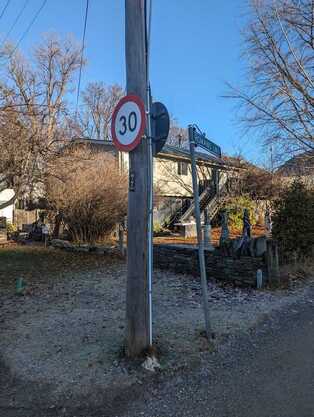|
Better Streets welcomes the new NSW Speed Zoning Standard however there is still room for improvement. For the first time NSW has a policy that articulates the street design requirements of 30km/h speed zones. 30km/h speed zones are essential for making urban areas safe for people walking and riding a bicycle. Their implementation is one of the Better Streets’ Key Asks and has been the core work of 30please, a Better Streets coalition member. The Speed zoning policy includes excellent principles, including:
The first requirement is that generally 30km/h zones will be “avoided” on arterial routes or where there is more than limited through traffic, this means that main streets on busy roads are likely to be ineligible for safe 30km/h speed limits. The second is that 30km/h speed zones can only be used where there is only one lane of travel for vehicles in each direction. This will require potentially costly work to be done to typical local streets particularly around intersections.  30 km/h zone sign post in New Zealand. Photo: Better Streets 30 km/h zone sign post in New Zealand. Photo: Better Streets The third is that 30km/h streets must be “self-explaining environments” which may require significant traffic calming measures to be built, such as physical treatments at the entry of streets and speed bumps which will add cost, time and complexity to implementation. Exactly what a "self explaining environment " is a term of art, and there are numerous examples of 30km/h zones from around the world which do not require special treatments, such as the 20mph arterials of London, or New Zealand. Whether this would be accepted by TfNSW remains to be seen. Presently, speed zones can only be changed by the state government transport agency but we look forward to a future delegation so that Councils can reduce speed limits on local streets consistent with the policy.
Better Streets looks forward to Transport for NSW minimising the barriers to the rapid rollout of 30km/h speed zones by providing clear guidance that most local residential streets should be 30km/h and providing a toolkit of low cost, fast roll-out interventions to support easy and consistent implementation particularly for quiet residential streets that will signal (not enforce) appropriate behaviours to drivers, similar to local low speed red/brick streets used in the Netherlands and Scandinavian countries. These could be simple entry treatments and/or signage for typical local streets, similar to some shared zones that use threshold paving or asphalt colour and signage to achieve desired behaviour. Preferably such a toolkit would be included in an update to the TfNSW Design of Roads and Streets Guide. This new policy represents a big step toward the normalisation of 30km/h speed limits, and, while there are still challenges, it opens the door for future improvements that could streamline the process of making more safe streets and is cause for (cautious) celebration.
1 Comment
Christopher Standen
14/8/2023 09:42:31 am
Thanks for the analysis.
Reply
Leave a Reply. |
Archives
July 2024
Categories
All
|


 RSS Feed
RSS Feed